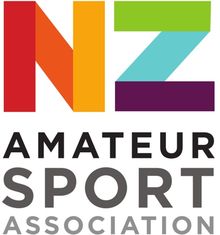Wellington's Ghost Rugby Clubs Part 9: Berhampore
WELLINGTON’S “GHOST” RUGBY CLUBS
Part 9 – The Pirates Of Berhampore & The Biel Cup
In 1757, the British East India Company won a decisive battle against the Nawab (Prince) of Bengal at “Barahampur”, consolidating English power in India. 83 years later, William Luxford arrived in Wellington (in 1840) on a former East India Company vessel, the “Adelaide” and settled on land in South Wellington, which became known as “Berhampore Farm” (a corruption of the Indian name), comprising the area between Newtown and Island Bay.
Berhampore Farm became home to a “Boiling-Down Establishment”, Tannery and Brick-Works, with a contentious “Bubonic Plague Hospital” also constructed nearby on the Town Belt. An initial sub-division of 61 sections along Adelaide Road took place in 1903. As an affordable working-class suburb which was always slow to receive municipal services, Berhampore’s residents were fiercely parochial and deeply suspicious of authority.
Charles Stanley Russell (a former Captain of the Southern Football Club Third Grade team and a Clerk at the motor vehicle importer Magnus Sanderson on Wakefield Street), was the driving force behind the formation of the “Berhampore Football Club”. Based around the local Anglican and Baptist churches, the new club became a member of the Wellington Rugby Union on 12 March 1913. Before 1913, a football field was carved off the old Berhampore Farm (the “Emerson Street Reserve”) which became the home ground for the St. Patrick’s College Football Club (established in 1885). Russell, who lived at 34 Waripori Street, was an official of the Berhampore Club for the next 20 years.
Initially a Junior Club, with teams entered in the Third and Fourth Grade competitions, Berhampore Football Club’s Patron was George Flux, the Headmaster of Wellington South School, with the inaugural Club President, Archibald “Archie” Whitelaw. Whitelaw (who also was responsible for the establishment of the golf links in the area), was a local identity of who it was said, “he is not one of the fellows who settle in a suburb and, do nothing but complain loudly of the apathy of everyone else. Actually, he is the type of resident who sits up and takes a live interest in his environment. Mountains may be easier to move than municipal martinets, but Archie knows something of faith combined with the gentle art of persuasion.” Whitelaw was the force behind the construction of the Club’s gymnasium on Akatea Street.

In 1920, after numerous seasons of finishing runner-up in the Junior, Third, Fourth and Fifth Grades, the Club unanimously decided to enter a team into the Senior Grade. While being stuck to the bottom of the championship table for much of the season, the Club finished a creditable sixth out of eight teams.
The following season (1921), Berhampore played in Wellington Rugby’s annual pre-season Seven-A-Side Tournament at Athletic Park, which was reported to have attracted 3,500 spectators. Much to the surprise of everyone, Berhampore defeated Petone in the Senior Final, 8 points to nil. The champion team comprised: Malm, Walters, Howard, Gibson, J. Hickling, D. Mathieson, and Glennie, all of whom went on to become Wellington provincial representatives. A Vice-President of the Club, Frederick Biel (owner of the Federal Billiard Room, in York Chambers, Manners Street), donated a silver cup (previously won by his race-horse “Arlington”), to be the winning trophy for this annual Tournament. The “Biel Cup”, (not the “Beale Cup” as recorded in “Wellington’s Rugby History”), was competed for from 1921 to 1932.
As to what became of the Biel Cup after 1932, the financial stresses of the Great Depression resulted in the Wellington Rugby Union abandoning the annual Seven-A-Side Tournament for Senior Clubs in 1933, noting that “former patrons of charge grounds were obliged to economise, and did so by reducing their expenditure on sport”. The last winner of the trophy was the Eastbourne Football Club. It was not until 1967 that a senior competition was re-established with a new trophy provided by the US Embassy. Where is the Biel Cup today?
In 1922, Thomas Neil Mouat (a star Buller representative who had joined the Club), was ordered off for foul-play (alleged kicking), in a match against Petone and suspended for three Saturdays.
The Club protested his innocence, and a series of hearings were undertaken to no avail, with Berhampore extremely bitter about the lost opportunity for championship glory that season. However, the Club won the Third Grade and went on to win the Junior Championship in 1924. Mouat meanwhile, went on to infamously tour England as part of the New Zealand Rugby League team in 1926; (that’s another story, for another day).
The Club adopted progressive tactics to remain financially viable. In 1923, it boasted 145 playing members, 140 honorary members and 61 officials, with all members paying subscriptions. With the Treasurer building a considerable “nest egg”, plans were successfully hatched to build a training gymnasium on Akatea Street in Berhampore. The new facility was opened in 1929 by the Mayor (George Troup) who noted that “he was quite accustomed to meeting people who wanted things done for them; in this case the officials of the Club had helped themselves, and it was a pleasure to meet people who could do things on their own account”.
However, a short time later in 1936, based on falling membership and unsatisfactory finances, it was decided to rename the Club, the “Pirates Football Club”, with the popular Pirates brand intended to attract new membership from a wider catchment. At the time, it was noted that “there are many people in Wellington who have been associated with the Pirates Clubs in Dunedin, Invercargill, Wanganui, Hastings, and elsewhere, and who no doubt would like to see a club of that name established in Wellington.” From their light blue jerseys, the teams of the renamed Club wore black jerseys, bearing white skull and crossbones. Francis (Frank) Kerrigan was the first of only two Pirates players to become Wellington representatives, in 1936. Kerrigan was a former Manawatu representative. The other was Cecil Rouxel, a Wellington Police Officer. Frank and Cecil were the only two “Pirates” to ever take to the field in a Wellington representative jersey.
In 1943, the Pirates Club went into recess for the duration of the war, but retained its affiliation to the Wellington Rugby Union. At the war’s end, a reversion to the original name and colours of the Berhampore Football Club was decided upon, with Fred Bognuda, Chairman of the Wellington South Progressive Association, the President of the revived Club. It was reported that support “extended widely through the Wellington South area, and amongst those keenly interested in the revival of the Berhampore Club were many business men.”
The Berhampore Club survived for another 30 years until 1975, but never achieved the heights it reached before World War Two. Among its achievements in the post-war years, Berhampore won the Third Division of the Third Grade in 1956 and the Second Division in 1964 and 1970. In 1969 and 1970, Berhampore won Wellington Rugby’s Club Championship, with the highest average points per team.
Among the Wellington representative players from the Club were: Percy James Charles (1926); G E Clark, (1949); N Condor (1920); William Deere (1924-25, 1928); Jason Duncan (1921-25); B M Gibson (1921); C Glennie (1929); C F Goodall (1926); Neville Douglas Gubb (1948); R Hickling (1924); J Hickling (1920, 1923); A Howard (1920, 1923-24); Francis Kerrigan - Pirates (1936); George Alfred Lang (1924-28); William Malin (1920-21); D Matheson (1920-21);, F J McDonald (1929), Ian McArtney (1924); Frederick Henry Mollier (1929-30); R Pickering (1929); Alexander Maule Pope (1923-24); Cecil Sanderson Rouxel - Pirates (1939);, 40; Samuel James Standen (1920-23), also a Wellington Captain; N A Walters (1920-21, 1924-25); and Harry Whiterod (1921-22).
100 years after the formation of the Berhampore Football Club, local residents were reported as saying that they “feel their suburb has been left at the bottom of the pile, with little to no representation on Wellington City Council. We feel like a forgotten suburb.” Which brings to mind an Indian proverb, which is perhaps relevant to mention, given the struggles of the early residents – “what was hard to bear is sweet to remember”.
The Berhampore community has a proud rugby history, which deserves our memory and our thanks.
Steven White, 19 Mar 2019
Adam Julian, 19 Mar 2019
Steven White, 12 Mar 2019
Adam Julian, 04 Mar 2019
Steven White, 12 Feb 2019








.jpg)






